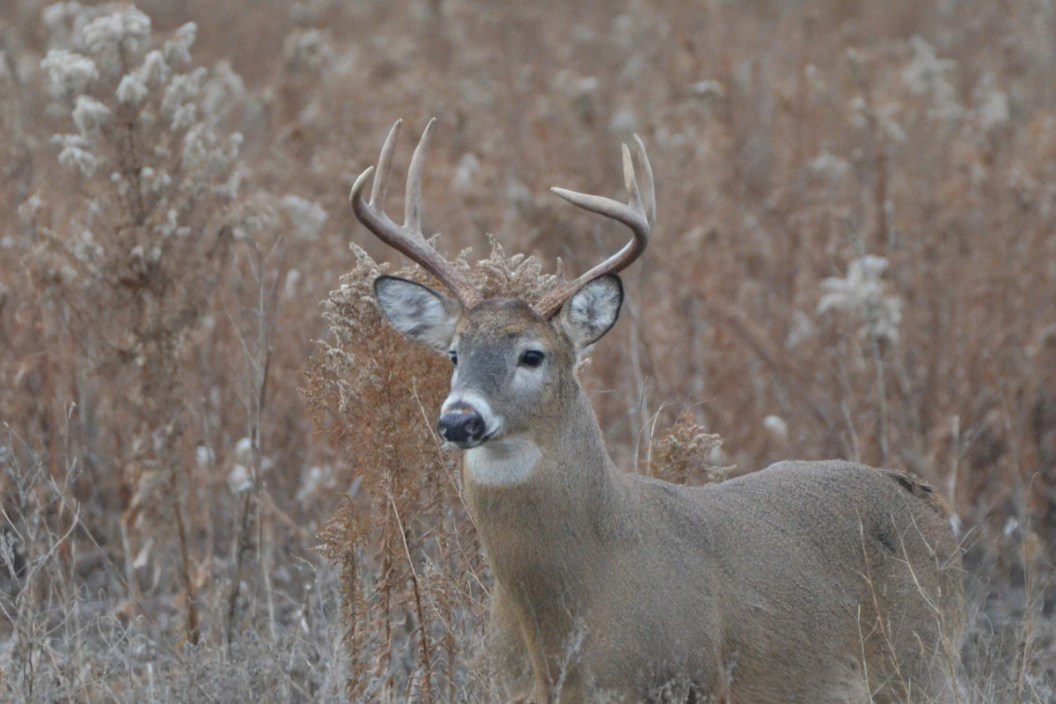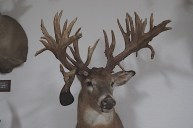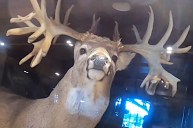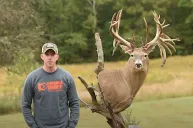We know everyone's definition of what makes for a nice buck is subjective, but let's be honest: Most of us would prefer to shoot a big buck with an impressive set of antlers over a younger deer. I know there are exceptions to that rule, but we still cannot help but wonder every time we spot a nice set of deer antlers: "What does that buck score?" For the sportsman or woman with little knowledge of scoring systems or the record books, field judging an animal can be tricky. That's especially true if you're hunting with an outfitter or are the guest of a property with a minimum gross score requirement. Many places with such requirements seem to set the minimum on a 120-inch deer, which is a rather respectable animal for most hunters out there. In fact, I'd say that's a great buck for most hunters. But we're not here to judge what someone else harvests today. Instead, we want to simply help our fellow deer hunters quickly identify a deer that will score this amount. Once you understand what a 120-class buck looks like, it becomes much easier to judge the score in other classes of animal, too.
The Measurements That Matter Most
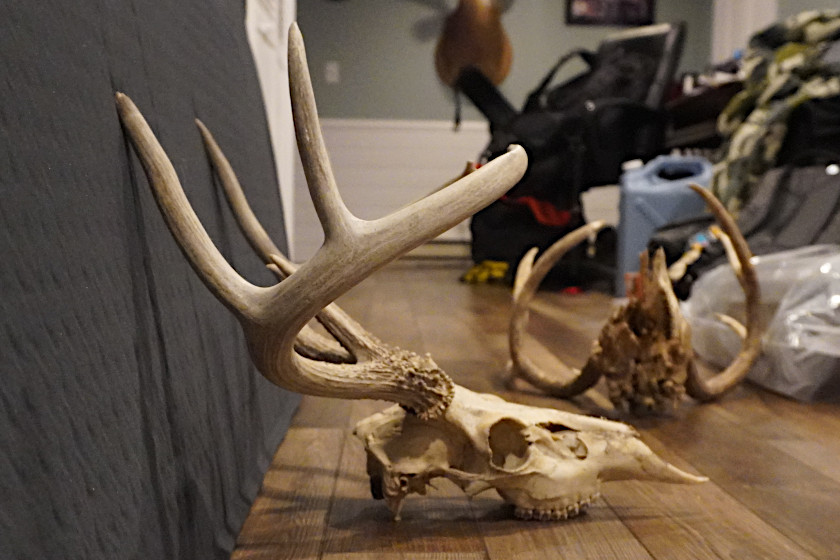
This 120-inch buck had roughly 19-inch main beams. Photo by Travis Smola
To understand what a 120-inch whitetail deer looks like, it helps to know the measurements that usually contribute the most to the final score. The Boone and Crockett Club has a nice breakdown of the score of a 171-inch buck on its website. There are exceptions to these rules, but generally these are the measurements that usually matter most. On most deer, the main beam length is going to be the single largest contributor to score, at approximately 30 percent. That is closely followed with the inside spread credit and the length of the second and third points, at 12 percent each. The fourth point length (if present) makes up another 7 percent.
After that, most bucks gain on average 6 percent of their score each from the first point (brow tine) length and the first circumference measurements. The second, third, and fourth measurements then often make up the rest of the score.
Every once in a while, you'll have a deer like the Joe Franz buck, which gets most of its score from circumference measurements and tine length rather than inside spread credit—but those examples are usually rare. Knowing that the main beams and spread make up most of the credit is one of the quickest ways to judge most whitetails in the field. Of course, we can't hold a tape measure up to the animal while it is still alive, which means you're going to need to use the animal's other features to make an estimate.
How to Judge a Buck Based on His Facial Features

This 140-inch buck has a tip-to-tip ear spread of just over 16 inches, which corresponds with his inside spread measurement. Photo by Travis Smola
Generally, the most accepted way to judge a buck's features is by using some known distances on the animal's head. Again, you might get some weird variations from deer to deer based on their age and the part of the country they inhabit, but I went ahead and measured my own taxidermy to get a better idea. Most hunters use the space between the ear tips as a good rule of thumb. It's usually a safe bet to estimate this distance at 16 inches. To be sure, I measured three mounts of Michigan bucks. Two were 16 inches on the nose. One was an older deer my dad shot, and that deer's ears came in at 15½. I guess he shrank slightly with age.
In any case, using this as a rule, you need only look at where the buck's main beams are in relation to the ears to estimate the inside spread. A buck with a 16-inch spread can easily score 120 inches, but it's even more likely if his beams look to be an inch or more past the ears. Then you're looking at an 18-to-20-inch inside spread. Just about any buck with a spread of this magnitude is likely to be a great deer any way you look at it.
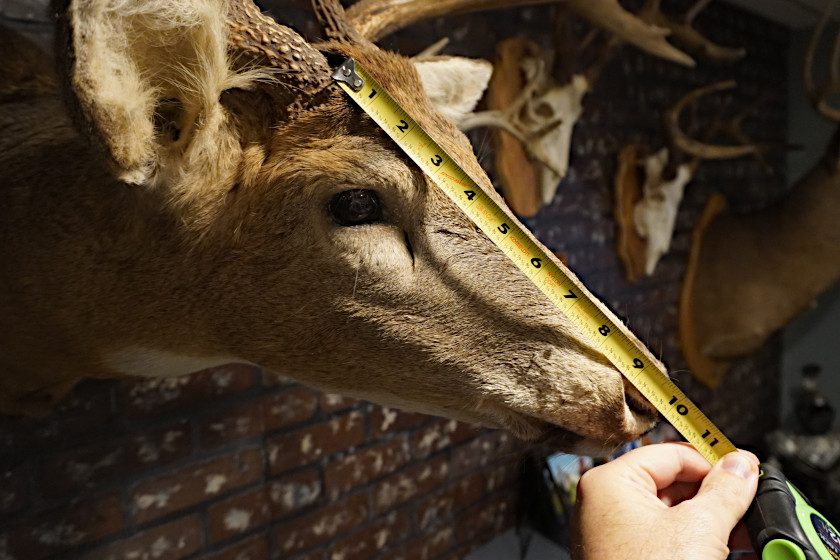
Tape measure showing the length of buck's snout. Photo by Travis Smola
Estimating the main beams is a little trickier. Another rule of thumb is to simply look for the tips of the main beams to extend out past the nose. For reference, on an adult whitetail buck, it's about 10 inches from the base of the antlers to the tip of the nose. The two bucks I have on my wall have 22- and 23-inch main beams, respectively. It gets a little deceptive because the smaller buck has beams that sweep in and upward, thus making them appear shorter than they are. It has been my experience that a 120-inch buck will have beams that appear to reach at least halfway up the snout to the nose, or about 5 inches. That usually indicates main beams of 18 to 21 inches in length.
Going back to the nose as a point of reference, you can use this distance to help estimate tine length if you're looking at the buck's head in profile. Most of the 120-inch bucks I've seen have G2s that are, at a minimum, at least 7 inches. But the odds will be more in your favor if the G2s are 8 or 9 inches. You'll get a lot of variation in the length of G3s, but if they are nearly identical, the buck has a good chance of hitting that 120-inch mark. Another point of reference for the tines is the ears of the animal. An adult whitetail buck usually has ears that are roughly 6 inches long. A buck with tines that appear slightly longer than his ears has a good chance of scoring in the 120-inch range.
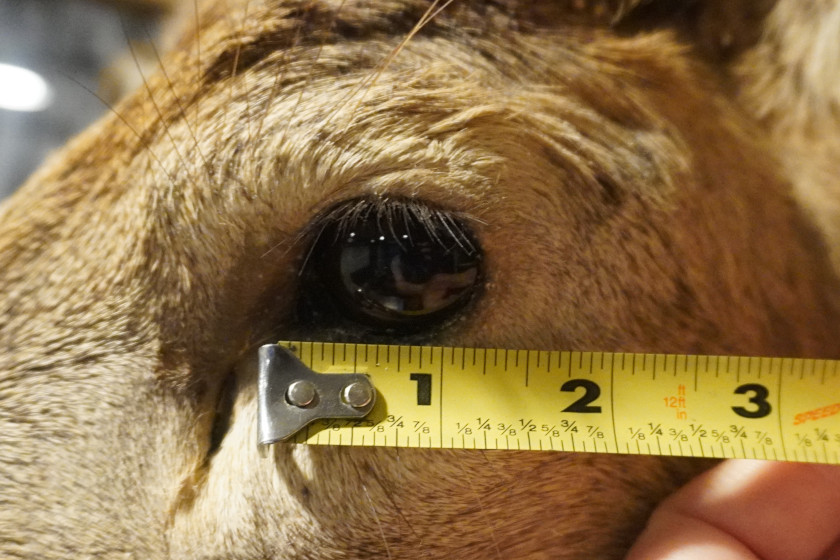
The eyes of a whitetail are roughly 4 inches in circumference. Photo by Travis Smola
You can also estimate the circumference measurements on a deer using the animal's eyes. It's about 4 inches around the average eye of a deer. If the base and eye appear to be almost the same circumference, you're looking at least 4-inch bases. Most of the 120-inch deer I've seen have bases that are slightly larger than the eyes, putting the circumference in the 4.5-to-5-inch range. If the rack carries that mass out through the rest of the main beam, all the better. It's easy to underestimate the mass since it does make up a small percentage of the overall score in most deer, but you'd be surprised how quickly those measurements add up.

This whitetail scored just over 120 inches. He had a 16-inch spread, 8-inch G2s, and 4.5-inch circumferences. Photo by Travis Smola
So, at the end of the day, it's a safe bet you're looking at a 120-inch deer if it has at least a 16-inch inside spread, 18-to-21-inch beams, 7-to-9-inch G2s, and a first circumference measurement of at least 4 inches. I usually look at spread as my main judge. Anything that has at least four points on either side and a spread of 16 inches is likely going to score at least 100 inches. A buck with five points on either side has a much greater chance of hitting that 120-inch minimum than one with only four unless there's good mass and tine length. At least that's been my experience. Whether that qualifies as a trophy buck or not, we will not judge. I can just tell you the perceptions of hunters here in Michigan are vastly different from those in a "big buck state" such as Iowa or Ohio. Depending on the state, a 120-inch buck may only be eligible for the big game record books while bowhunting. Here in Michigan, it's 125 inches at a minimum to be eligible with a firearm. At the end of the day, it's up to each individual hunter to determine what constitutes a shooter in their area in this hunting season.
For more outdoor content from Travis Smola, be sure to follow him on Twitter and Instagram. For original videos, check out his Geocaching and Outdoors with Travis YouTube channels.
